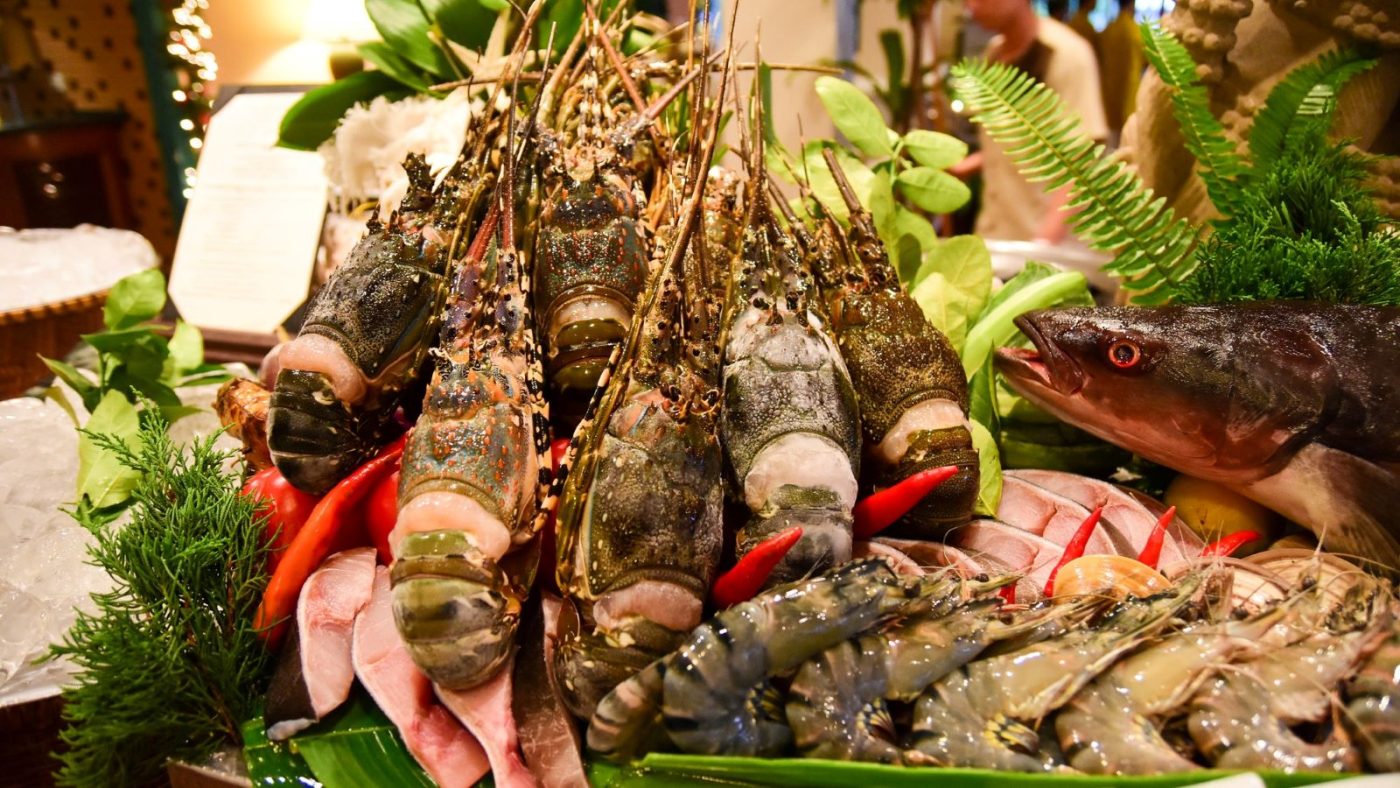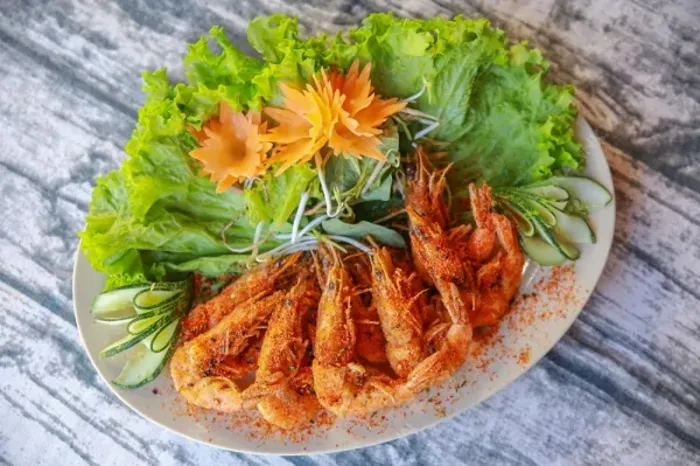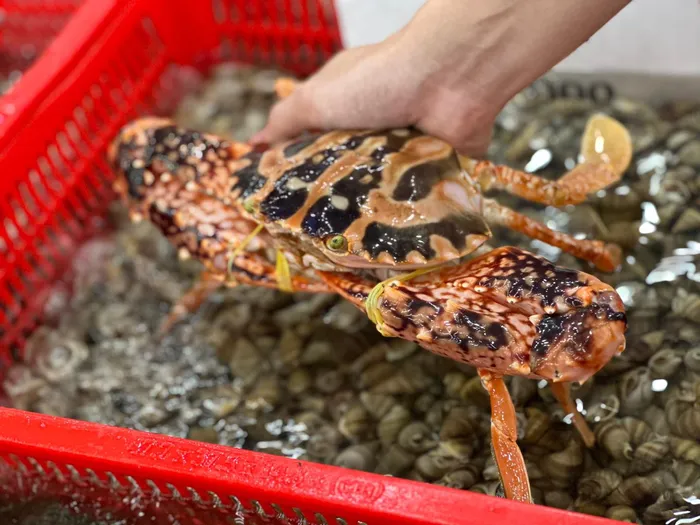Introduction to Danang Seafood
Danang, a vibrant coastal city in central Vietnam, is renowned for its pristine beaches, bustling markets, and a seafood cuisine that captures the essence of the sea. Danang seafood is more than just a meal; it’s a celebration of the city’s maritime heritage, showcasing fresh catches transformed into dishes that balance bold flavors and delicate textures. From tamarind crab to grilled oysters and spicy seafood hotpots, the city’s seafood offerings reflect its history as a fishing hub and its modern evolution as a culinary destination. Whether savored at beachfront restaurants or hidden alley stalls, Danang seafood is a sensory “show” that draws food lovers from around the globe. This article explores the history, cultural significance, and unique dishes of Danang seafood, compares it with other Vietnamese regions, and provides key addresses in Danang, while highlighting the authentic culinary experiences at VietRice Essence Restaurant and Viet Rice Kitchen Cooking Class in Hanoi, which connect travelers to Vietnam’s rich food culture.

Historical Roots of Danang Seafood
Early Maritime Beginnings
Danang’s seafood tradition is deeply rooted in its geography. Situated along the South China Sea, with My Khe Beach and the Han River, the city has been a fishing hub for centuries. Archaeological evidence from the Cham civilization (2nd–15th centuries), which thrived in central Vietnam, includes fishhooks and pottery used for preserving seafood, suggesting early reliance on marine resources. The Cham’s trade networks, documented in sites like My Son, brought fish sauce and dried seafood to regional markets, laying the groundwork for Danang’s culinary identity.
By the 16th century, under the Nguyen lords, Danang emerged as a key port, rivaling nearby Hoi An. Fishermen along the Son Tra Peninsula and Tho Quang ward supplied fresh catches—shrimp, crab, squid, and fish—to local markets, where cooks developed recipes that emphasized freshness and simplicity. Oral histories, preserved in Danang’s fishing communities, describe communal feasts where seafood was grilled over charcoal or boiled with lemongrass, practices that persist today.
French Colonial Influence (1887–1945)
The French colonial period elevated Danang’s seafood cuisine. Arriving in 1887, the French developed the city as a port, increasing maritime trade and introducing new preservation techniques like salting and smoking. Colonial markets, such as Con Market, became hubs for seafood, with vendors selling oysters, clams, and fish to French settlers and Vietnamese locals. French culinary influences, like creamy sauces, subtly shaped dishes such as grilled scallops with scallion oil, though Vietnamese cooks retained their focus on fresh ingredients and bold spices.
The colonial era also saw the rise of fish sauce (nuoc mam), a cornerstone of Danang seafood. Made from fermented anchovies sourced from the South China Sea, nuoc mam became a defining flavor, used as a dipping sauce or marinade. Artifacts from this period, including ceramic fish sauce jars found in Danang’s Cham Museum, highlight its cultural and economic significance.
Post-War and Modern Evolution
The Vietnam War (1955–1975) disrupted Danang’s fishing industry, as coastal areas faced conflict and resource scarcity. However, the post-war Đổi Mới reforms of 1986 revitalized the economy, boosting seafood production and tourism. Danang’s beaches, ranked among the world’s best by Forbes, drew visitors, and its seafood restaurants flourished along Vo Nguyen Giap Street, known as the “seafood strip.” The Tho Quang seafood market, where fishermen sell daily catches, became a symbol of the city’s maritime vitality, as noted in travel guides like Premier Village Danang Resort.
Today, Danang seafood is a global draw, featured in blogs like DanangCuisine.com and praised by chefs like Anthony Bourdain for its freshness and passion. The city’s investment-friendly climate, as highlighted by Remote Lands, has spurred a dynamic dining scene, blending rustic stalls with upscale restaurants, all celebrating the sea’s bounty.
The “Show” of Danang Seafood
A Culinary Spectacle
Danang seafood is a sensory feast, unfolding in beachfront restaurants, bustling markets, and hidden alley eateries. The “show” begins with the selection of live seafood—crabs scuttling in tanks, shrimp twitching, and fish glistening on ice—at places like Tho Quang Market or restaurants like Be Man Seafood. Diners often choose their catch, watching as chefs grill, steam, or stir-fry it with aromatic herbs, creating dishes that are as visually stunning as they are flavorful.

Key dishes that define Danang seafood include:
- Tamarind Crab (Cua Rang Me): Plump crabs sautéed in a sticky, sweet-sour tamarind sauce, a signature dish at Ba Thoi Seafood (96-98 Le Dinh Duong, Hai Chau). The vibrant orange sauce and tender crab meat make it a crowd-pleaser.
- Grilled Oysters (Hau Nuong Mo Hanh): Fresh oysters grilled with scallions, peanuts, and a light creamy or spicy sauce, served sizzling at Quan Be Nu or Nam Danh (K139/H59/38 Tran Quang Khai, Son Tra).
- Seafood Hotpot (Lau Hai San): A communal dish with shrimp, squid, fish, and clams in a tangy, lemongrass-infused broth, popular at Moc Seafood (354/1 Vo Nguyen Giap, Ngu Hanh Son).
- Snail Dishes (Oc): Sea snails, like oc huong xao dua (sautéed with coconut) or oc hap xa (steamed with lemongrass), showcase Danang’s love for mollusks, found at stalls near Hoang Sa Street.
- Grilled Fish (Ca Nuong): Fish like ca suu (sweet-fleshed with few bones), grilled with green chili, served with rice paper and herbs at Phu Thanh Seafood (My Khe T20, Truong Sa, Son Tra).

Dining Experience
The dining experience is integral to the “show.” Beachfront restaurants like My Hanh (14 Hoang Sa, Son Tra) offer open-air seating with ocean views, where the sound of waves and the scent of grilled seafood create a multisensory delight. Hidden gems like Nam Danh, tucked in a Son Tra alley, provide a cozy, local vibe with affordable dishes (50,000 VND, ~$2 USD). Upscale venues like Brilliant Seafood (178 Ho Nghinh, Son Tra) elevate the experience with modern decor and premium dishes like lobster in garlic butter, catering to tourists and business travelers.
Street food stalls, such as those at the Hoang Sa-Le Duc Tho junction, offer a raw, communal atmosphere, with diners perched on plastic stools, cracking open snails, and dipping shrimp in nuoc mam. The Tho Quang seafood market, where catches are sold fresh off the boat, lets visitors buy seafood and have it cooked on-site, a practice rooted in Danang’s fishing culture.

Cultural Significance
Danang seafood reflects the city’s maritime identity and communal spirit. Fishing families in Tho Quang and Man Thai wards supply restaurants, preserving traditions of net-casting and boat-building. Dishes like seafood hotpot foster togetherness, with families and friends sharing broth and stories. The simplicity of ingredients—fresh seafood, local herbs, and nuoc mam—mirrors Danang’s unpretentious character, as noted by local food expert Summer Le, who praises the city’s “unbeatable” seafood.
Comparisons with Other Vietnamese Regions
Hanoi Seafood
Hanoi, in northern Vietnam, offers seafood influenced by its inland rivers and cooler climate. Dishes like bun rieu (crab noodle soup) and cha ca (grilled fish with dill) emphasize hearty broths and turmeric-heavy flavors, served at places like Cha Ca La Vong. Hanoi’s seafood, often sourced from coastal provinces like Quang Ninh, is fresh but less varied than Danang’s ocean bounty. The capital’s urban setting lacks Danang’s beachfront dining, and its focus on rice-based dishes contrasts with Danang’s diverse preparations (grilled, steamed, hotpot). Danang’s tamarind crab and grilled oysters, with their tropical zest, feel more vibrant than Hanoi’s subtler flavors.
Ho Chi Minh City (Saigon) Seafood
Ho Chi Minh City, Vietnam’s southern metropolis, boasts a cosmopolitan seafood scene, with dishes like lau ca loc (snakehead fish hotpot) and cua lot rang muoi (soft-shell crab with salt). Restaurants in District 1, such as Oc To Saigon (Dau Cau Rong, Vo Van Kiet), serve imported seafood like Alaskan lobster alongside local catches. Saigon’s dining is polished, with air-conditioned venues contrasting Danang’s open-air, beachside eateries. While Saigon offers variety, its seafood lacks the hyper-local freshness of Danang, where catches are hours old. Danang’s focus on simple, bold flavors outshines Saigon’s fusion-heavy dishes, which often incorporate Cantonese or Western elements.
Hue Seafood
Hue, 100 km north of Danang, is known for its imperial cuisine, with seafood dishes like bun hen (mussel noodle soup) and oc buou hap (steamed snails with lemongrass). Hue’s seafood, served at stalls along Le Loi Street, is lighter and more herb-driven, reflecting the city’s royal refinement. Salt coffee, a Hue specialty, sometimes accompanies seafood, adding a savory twist absent in Danang. However, Hue’s smaller coastline limits its seafood variety compared to Danang’s abundant crabs, lobsters, and oysters. Danang’s beachfront dining and casual vibe also contrast with Hue’s serene, garden-like settings, making Danang’s seafood scene more accessible and dynamic.
Comparative Summary
Danang seafood excels for its freshness, variety, and beachfront dining, outpacing Hanoi’s inland subtlety, Saigon’s cosmopolitan polish, and Hue’s refined minimalism. Its signature dishes—tamarind crab, grilled oysters, and seafood hotpot—highlight bold, tropical flavors, while its proximity to the sea ensures unparalleled quality. Danang’s open-air restaurants and markets, rooted in fishing traditions, create a vibrant, communal “show” that other regions can’t match.
Key Danang Seafood Addresses
- Be Man Seafood: Lot 14 Hoang Sa, Man Thai, Son Tra. Open 9:00 AM–11:00 PM. Price: 40,000–2,750,000 VND ($1.70–$115 USD). Known for fresh seafood and beach views.
- Nam Danh Seafood: K139/H59/38 Tran Quang Khai, Tho Quang, Son Tra. Open 10:00 AM–8:00 PM. Price: 50,000–100,000 VND ($2–$4 USD). Affordable, cozy alley spot.
- Ba Thoi Seafood: 96-98 Le Dinh Duong, Hai Chau. Open 10:00 AM–10:00 PM. Price: 50,000–400,000 VND ($2–$17 USD). Famous for tamarind crab.
- My Hanh Seafood: 14 Hoang Sa, Son Tra. Open 9:00 AM–11:00 PM. Price: 60,000–275,000 VND ($2.50–$11.50 USD). Luxurious beachfront dining.
- Ca Chuon Co Seafood: 99 Vo Nguyen Giap, Bac My An, Ngu Hanh Son. Open 11:30 AM–2:30 PM, 6:00 PM–10:00 PM. Price: 80,000–210,000 VND ($3.33–$8.75 USD). Modern with turmeric-wrapped fish.
- Ngoc Huong Seafood: Loseby junction, lot 8+9, Vo Nguyen Giap, Son Tra. Open 10:00 AM–11:00 PM. Price: 40,000–2,000,000 VND ($1.70–$84 USD). My Khe sea view.
- Phu Thanh Seafood: My Khe T20, Truong Sa, Son Tra. Open 10:00 AM–10:00 PM. Price: 150,000–250,000 VND ($6–$10 USD). Grilled fish specialty.
- Moc Seafood: 354/1 Vo Nguyen Giap, Ngu Hanh Son. Open 10:00 AM–10:30 PM. Price: 69,000–1,649,000 VND ($2.90–$69.40 USD). Bamboo-decorated hotpot hub.
- Tho Quang Seafood Market: Hoang Sa-Le Duc Tho junction, Tho Quang, Son Tra. Open early morning. Price: Varies by catch. Buy fresh and cook on-site.

Culinary Connection to Danang Seafood
Seafood in Central Vietnam’s Cuisine
Danang seafood is a cornerstone of central Vietnam’s cuisine, known for its bold flavors and small, artful portions, as noted by Pullman Danang Beach Resort. Unlike northern Vietnam’s subtle broths or the south’s sweeter dishes, Danang’s seafood emphasizes freshness, with minimal processing to highlight the sea’s natural sweetness. Fish sauce, lemongrass, and chili dominate, creating dishes that are spicy yet balanced. Communal hotpots and shared plates reflect Danang’s social dining culture, where meals are a bonding ritual.
Markets like Tho Quang and Con are vital to this tradition, supplying restaurants with daily catches. Street food stalls, offering grilled squid or oyster porridge, make seafood accessible, while upscale venues like Ca Chuon Co elevate it with dishes like turmeric-wrapped fish.

VietRice Essence Restaurant: A Taste of Vietnam’s Coast
For travelers unable to visit Danang, VietRice Essence Restaurant in Hanoi brings central Vietnam’s coastal flavors to the capital. Located at 93 Phung Hung, Hoan Kiem District, this acclaimed eatery serves dishes inspired by Danang and Hue, such as lotus stem salad, herb-infused chicken, and seafood-inspired rice plates. While not specializing in seafood, the restaurant’s use of fresh herbs, fish sauce, and vibrant spices captures the bold, balanced profile of Danang’s cuisine, making it a perfect prelude to exploring coastal flavors.
VietRice Essence’s cozy ambiance, with attentive staff like Nam and Ms. Nhan, mirrors the warmth of Danang’s beachfront eateries. Diners praise the vegetarian options, affordable prices (around $3–$8 USD per dish), and complimentary drinks, which evoke the hospitality of central Vietnam’s dining scene. A meal here, paired with a visit to Hanoi’s Old Quarter, connects travelers to Danang’s culinary spirit.
Viet Rice Kitchen Cooking Class: Mastering Coastal Flavors
To immerse yourself in Vietnam’s culinary heritage, Viet Rice Kitchen Cooking Class in Hanoi offers a hands-on experience that complements Danang’s seafood culture. Held daily from 9:00 AM to 11:00 AM or 2:00 PM to 4:00 PM, these two-hour classes begin with a guided tour of Dong Xuan Market, where participants select fresh ingredients like herbs, rice noodles, and fish sauce, echoing the vibrant markets of Danang’s Tho Quang ward.
Led by expert chefs, the classes teach dishes like spring rolls, herb-infused chicken, and lotus stem salad, which share the light, aromatic profile of central Vietnam’s cuisine. While seafood-specific dishes may not always be featured due to Hanoi’s inland location, the techniques—using fish sauce, lemongrass, and chili—mirror Danang’s seafood preparations. Participants enjoy their creations in a traditional setting, with a complimentary drink and a video memento, plus recipes to recreate dishes at home. This experience, blending market exploration with cooking, connects travelers to Danang’s coastal flavors, fostering appreciation for its seafood heritage.

Cultural and Tourism Impact
Preservation and Challenges
Danang seafood is a cultural treasure, preserving fishing traditions and communal dining practices. However, overfishing, tourism growth, and coastal development threaten sustainability, as noted in Reddit discussions on Danang’s dining scene. Initiatives like the Tho Quang Fisheries Cooperative promote responsible sourcing, while restaurants like Be Man source from reputable suppliers to ensure freshness. Tourists are encouraged to avoid commission-driven recommendations from taxi drivers, opting for verified venues like those on Vo Nguyen Giap Street.
VietRice Essence and Viet Rice Kitchen contribute to cultural preservation by showcasing central Vietnamese flavors authentically. Their market tours and cooking classes educate visitors about local ingredients, fostering respect for Danang’s seafood heritage and encouraging sustainable tourism.
Global Appeal
Danang seafood attracts millions annually, fueled by the city’s beaches, affordable prices (dishes from $1.70–$115 USD), and social media buzz. Instagram posts of tamarind crab and grilled oysters, shared by blogs like AuthenticFoodQuest.com, draw foodies to Vo Nguyen Giap’s seafood strip. The city’s proximity to UNESCO sites like Hue and Hoi An enhances its appeal, making seafood a highlight of central Vietnam’s culinary trail. Danang’s blend of rustic stalls and upscale dining, rooted in its fishing roots, positions it as a global seafood destination.

Practical Tips for Enjoying Danang Seafood
- Where to Eat: Prioritize Vo Nguyen Giap Street (Son Tra/Ngu Hanh Son) for beachfront restaurants like Be Man, My Hanh, or Ngoc Huong. Visit Nam Danh for a hidden gem or Tho Quang Market for market-to-table freshness.
- Timing: Dine early (11:00 AM or 5:00 PM) to avoid peak-hour crowds, especially at Nam Danh or Ba Thoi. Morning visits to Tho Quang Market ensure the freshest catches.
- Must-Try Dishes: Order tamarind crab at Ba Thoi, grilled oysters at Nam Danh, or seafood hotpot at Moc Seafood. Pair with nuoc mam and chili for authentic flavor.
- Culinary Preparation: In Hanoi, dine at VietRice Essence Restaurant to sample central Vietnamese dishes, preparing your palate for Danang’s seafood. Join a Viet Rice Kitchen Cooking Class to learn fish sauce-based recipes, enhancing your Danang experience.
- Respectful Tourism: Choose restaurants with live tanks for freshness, avoid commission-driven spots, and tip staff (5–10%). Support local fishermen by buying at Tho Quang Market.
Book your cooking class today and experience Vietnam’s culinary heritage firsthand!
VietRice Essence Restaurant & Viet Rice Kitchen Cooking Class
Your gateway to authentic Vietnamese culinary traditions
https://vietriceessence.com/
http://vietricekitchen.com/

